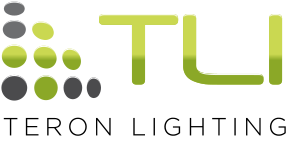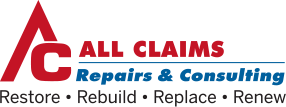Numerous variables influence the volume of M&A transactions completed each year. If it were only up to the willingness of an acquirer and a seller to transact, trends like what we saw in 2021 would continue. Things have greatly changed since then, and a new normal has set in. This is perhaps not too abnormal relative to other periods in history—but relative to what the M&A markets recently experienced, it can cause a knee-jerk reaction to think of the outlook for 2023 as gloomy or subdued. It’s Roebling’s opinion that what we see in 2023 will be more like the old normal (pre-2019 and Q4 2020).
This article looks at what has slowed an unprecedented period of M&A activity and why we believe 2023 will revert to trends we have seen in years past.
Acquirer Appetite
As we know, it takes two to tango. Both acquirers and sellers must show up to the plate ready to transact with an offer that’s mutually agreeable. In this environment, it’s our opinion that acquirers have many more variables to ponder right now than sellers do. Those include interest-rate environments, economic uncertainty, inflation, availability of debt capital, and total buyer-available buyer capital. Here’s how each of these variables could affect transactions in 2023:
Interest rates
On December 14, 2022, the Fed’s FOMC branch hiked its federal funds rate to the range of 4.25%–4.50%, a 50-basis-point jump from the November range, marking a 425-basis-point increase from the beginning of 2022. For reference, this is the highest the federal funds rate has been since 2008 and the single highest annual increase since the early 80s. These higher rates immediately increase borrowing costs for consumers and businesses. Making matters worse, the FOMC doesn’t give clear guidance on its future intentions.
One thing is clear, though: they do anticipate more rate hikes and seem unfazed by the prospect of those hikes causing a recession. Why do rates matter? Borrowing costs are crucial influences on M&A activity. Acquirers use loan markets to consummate transactions, and if those markets are suddenly more expensive, it has a financial impact on acquisition scenarios (return expectations). When this happens, acquirers tend to share this cost with sellers (e.g., it’s reflected in a reduced valuation).
Economic concerns
Interest rates are a double-edged sword. They’re an effective tool for the Fed’s FOMC branch to tame inflation, which has been soaring. And there are signs that the rate hikes are working, at least in leveling inflation (a 7.4% year-over-year increase in November 2022, which is still super high, relatively speaking). But higher interest rates come at a cost to the U.S. economy, because consumers and businesses will borrow less, which stymies aggressive buying habits. Slower buying patterns then lead to sluggish demand in the economy. It’s a vicious circle that has a freezing effect on discretionary expenditures (capital equipment, aggressive hiring, expansion, consumers, etc.). All these lead to acquirers becoming uncertain about a potential target’s income statement and balance sheet outlook. When that happens, acquirers tamp down expectations, leading to less aggressive valuations and “safer” payment consideration to sellers. In some cases, it also causes acquirers to retreat to the sidelines or become hyper-focused on industry niches.
Inflation
Inflationary pressures also present an element of income statement (“P&L”) uncertainty. As inflation began to rise in 2021 and early 2022, many price increases were passed through. At some point, those price hikes will be met with resistance, and Roebling believes this resistance is starting to arise. When pricing pass-through resistance occurs, sell-through can weaken and margins can deteriorate. Acquirers of companies will struggle to gauge the likelihood of pricing pass-through resistance, which affects their confidence in P&L trends. As is the case with macro-economic concerns, this can cause acquirers to retreat, bargain-shop, get hyper-focused, or get creative with their transaction structures.
Financing availability
Lenders tend to possess similar concerns to those of acquirers. Economic concerns and inflationary pressures on corporate P&Ls tend to be at the forefront as lenders (a) underwrite risk, (b) choose which deals to underwrite with acquirers, and (c) triage the amount of capital they’ll supply in a given transaction scenario. More uncertainty usually equates to less capital being deployed by lenders. The two primary funding sources in any deal are equity and debt capital. The general rule of thumb is that acquirers use debt capital to achieve higher returns on deals. When lenders curb the volume of capital they’re willing to lend, acquirers’ returns diminish under a predetermined valuation structure. Acquirers will pass these diminished returns, caused by capital availability, through to the sellers via reduced valuations.
Acquirer cash
Private equity firms have record levels of capital and are still flush with cash. There are more than a trillion dollars in private equity funds, and this money must go somewhere, particularly because private equity funds have a finite time to invest their capital. In addition, many strategic acquirers have fared well in the last several years and have war chests ready to deploy. Unlike private equity, these strategic acquirers have choices about what they can do with their capital. If strategic acquirers are concerned about making acquisitions in the current environment, they can invest internally or pay shareholder distributions.
As you see, acquirers have many unknowns to consider as they approach potential transactions. When this much uncertainly is present, disciplined acquirers seek safety in sector niches and begin to think very conservatively about valuation and how they can share risk with sellers (e.g., less cash to sellers at close). Lower valuations and risk-sharing transaction structures are theoretically great tools for acquirers, but sellers must be willing to embrace them—which is always easier said than done. These factors are partially offset by the need for many buyers, particularly private equity funds, to put capital to work. This will preserve acquirer demand, although it will be disciplined.
Seller Appetite
Sellers’ decisions in the lower-middle market are usually less complex than those of buyers. The decision to sell usually comes down to a few organic (non-market) factors and to a lesser extent how the market is trending. That’s not to say that sellers turn a blind eye to market dynamics, but there are certainly other factors at play when they make the monumental decision to sell. The factors we see affecting the 2023 supply of deals include the following:
Need to retire
There are approximately 350,000 lower-middle market companies in the U.S., which employ approximately 30% of the country’s workforce and produce approximately a third of U.S. GDP. It’s estimated that 70% of those businesses will be sold and acquired over the next decade simply because their owners have no succession plans and are reaching retirement age. This unavoidable push from Father Time is one of the biggest drivers of M&A in the U.S. The phenomenon also pays little to no regard to external influences on the acquirer community. This is another of the driving forces causing overall resiliency and quick adaptation of seller expectations: many sellers sell because they must, as opposed to being able to time a market cycle.
Fatigue
Business owners have been through a lot the last few years. It’s difficult enough to run a business in normal circumstances. Continuing to provide goods and services to customers at a value they appreciate sounds simple until you consider all the organizational elements that must be orchestrated to provide those goods and services, particularly if you want to achieve growth. When you couple this with a global pandemic, increased government regulation, a supply chain crisis, rising inflation, and a challenging workforce environment, it can cause owners to wave a white flag and decide the time is right to exit, even if the valuation and transaction consideration dynamics aren’t as favorable.
Valuations and consideration paid
M&A market valuations are in the midst of a downward valuation adjustment. Valuations are decreasing as a direct result of buyer demand (less of an auction frenzy than 2021) and unavoidable and suspected impacts to post-close corporate P&Ls and return profiles. In addition, new norms are settling in regarding the consideration paid to a seller. When a seller transacts, it’s extraordinarily rare for 100% of the transaction to be paid in cash. Other forms of consideration are usually combined with cash—typically seller notes, earn-outs, equity co-investments with the buyer, and escrows. When times are frothy, buyers are often willing to compromise on these other considerations paid and apply a much greater percentage of the consideration paid toward cash to make their deal more competitive. The general rule of thumb: the higher the cash payout, the more elevated the risk. Non-cash consideration is typically deployed to retroactively reduce valuations if negative things occur post-close and to better align the seller with the buyer in the post-close environment.
With decreasing valuations and less seller-friendly consideration being paid, how will sellers react? A segment of the seller community will certainly decide to wait until the environment is more favorable again. That said, the need to retire and overall fatigue will certainly continue causing sellers to bring their (usually) most valuable assets to the market so they can monetize them and enjoy the fruits of their labor. Because a selling event is usually more than adequate to satiate a business owner’s lifestyle, regardless of market timing, extracting every penny for their company isn’t their highest concern.
Conclusion
What does all this mean? We believe there could be a very subdued period at the start of 2023, as buyers continue to obtain clarity about the future and sellers come to embrace the new normal. With time, these two things will occur, and transactional activity will begin to gain momentum in the second half of 2023. We expect trends on par with the activity levels in the five years prior to 2019.
ABOUT THE AUTHOR
 Keith Carlson is Co-founder and Managing Partner at Roebling Capital Partners, a lower-middle-market private equity investment firm.
Keith Carlson is Co-founder and Managing Partner at Roebling Capital Partners, a lower-middle-market private equity investment firm.








